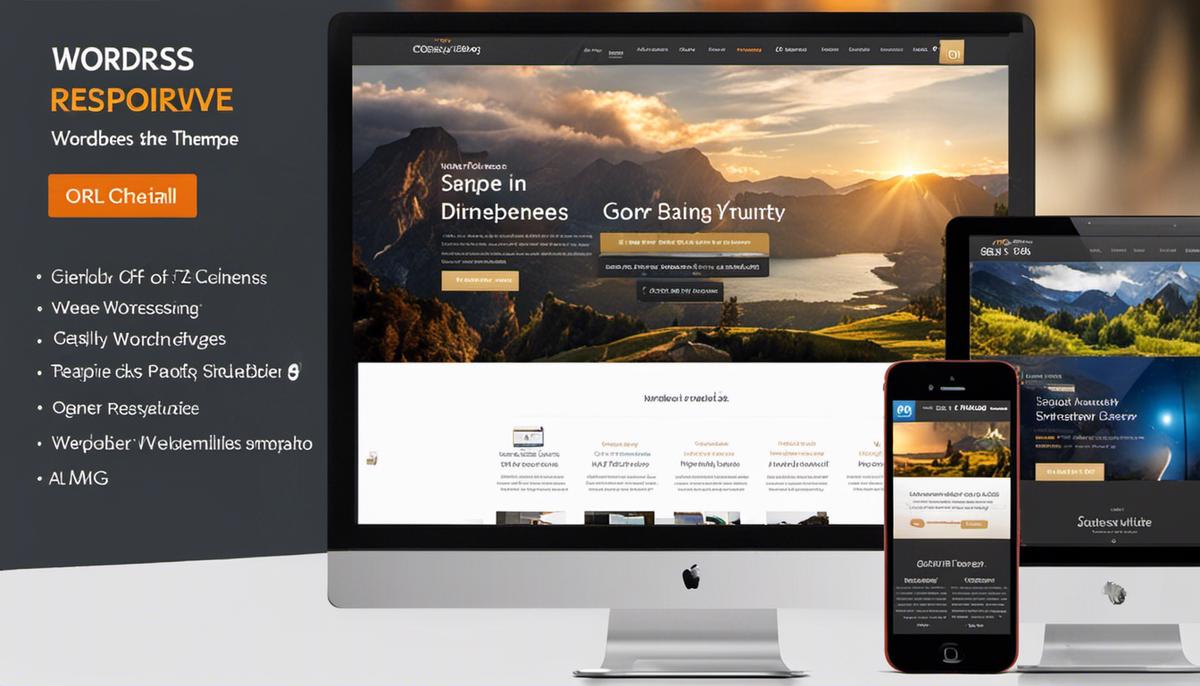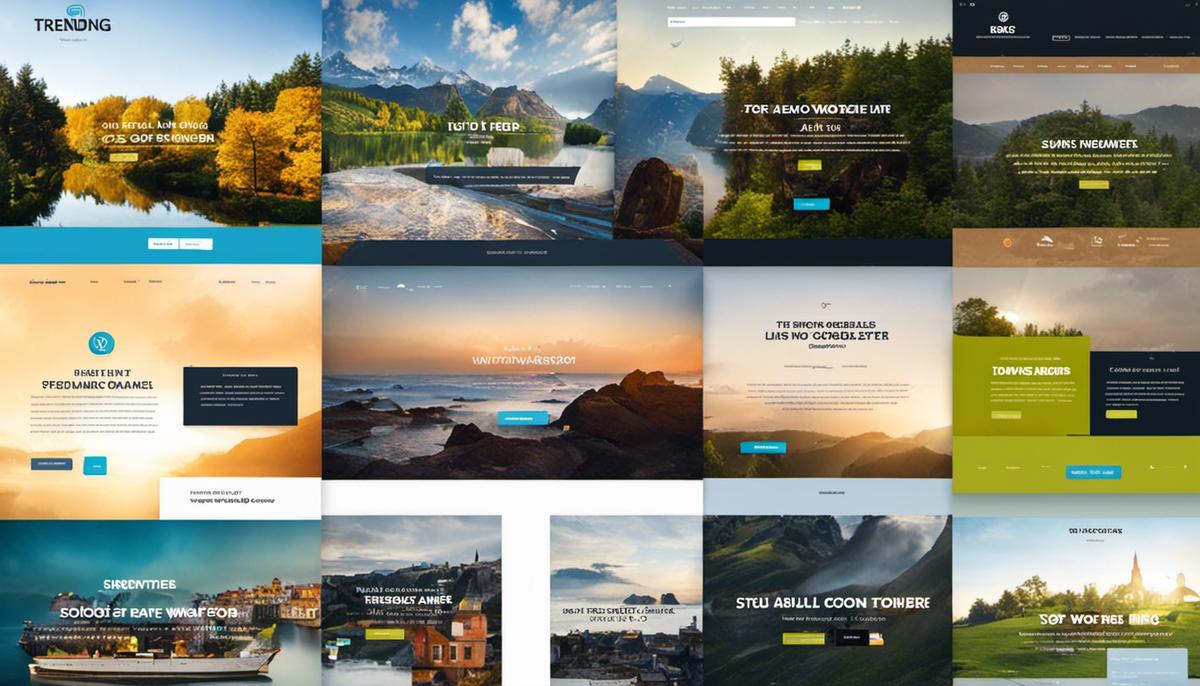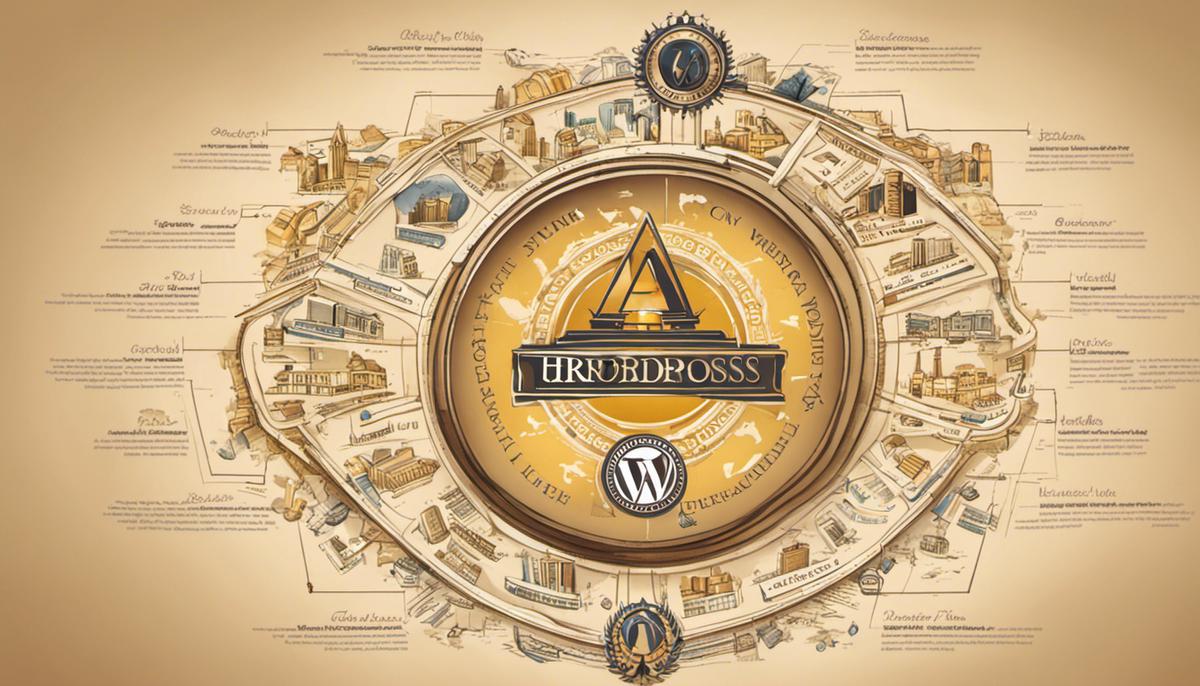In digital spaces, the way your website looks and feels to the user significantly impacts your site’s success in engaging and retaining visitors. One of the critical decisions that determine this appeal and functionality is the selection of a suitable WordPress theme. The importance of making an informed choice in choosing a WordPress theme goes beyond just aesthetics. It influences interaction, content visibility, and search engine optimization. This discussion delves into the essence of WordPress themes, presenting a careful look at some of the popular options on the market, followed by a guide on how to align your choice with your site’s content and objectives. Lastly, we explore how to optimize your chosen theme to enhance visibility, user engagement, and compatibility across varying platforms.
Understanding WordPress Themes
As tech aficionados with an insatiable craving for the latest tech advancements, the importance of WordPress themes in building and maintaining an impactful digital presence cannot be overemphasized. By embracing technology and keeping tabs on the latest in digital design, one can leverage WordPress themes to optimize content representation and audience engagement. Admirers of instantaneous solutions get the essence – WordPress themes are the new bread and butter for web content.
Jumping into the fray, WordPress themes are essentially pre-built website templates that define the appearance and display of a website hosted on WordPress. They encompass everything from the site’s header and footer to the blog, sidebar, and even the smallest widget. Graphical interface, typography, aesthetics, and layout – they dictate it all. Transcending the mere visual appeal, a theme is a defining pillar that holds the site’s functionality and usability together, exemplifying the virtue of automation over manual efforts.
The question now: with more than 3,000 themes to choose from, why are WordPress themes so critical for your content?
First up, customization. WordPress themes offer comprehensive control allowing modifications to cater to the unique brand identity – voila, fully-customized compelling websites made in a jiffy. The flexibility and the utility to cherry-pick designs boil down to great user experiences on the website – just as web technology aficionados realize and augur.
Search Engine Optimization (SEO) marks another critical domain where themes lend their weight. A strategic choice of WordPress theme grants a sturdy SEO foundation. An SEO-friendly theme not only ensures web crawlers correctly index the website but also accelerates the page loading speed. Upon resonating with Google’s algorithm, prospective traffic transformation escalates considerably.
WordPress themes further provide a plethora of pre-designed elements for one to experiment with, significantly cutting down the time and effort to build pages from scratch. They also offer out-of-the-box compatibility with many plugins, enhancing the website’s functionality without requiring extra coding efforts. Convenience, efficiency, and swift results – that’s technology at its best.
The prime importance undoubtedly lies in the end user’s experience. The core of any website aims to attract, engage, and retain visitors. The clever, strategic choice of a WordPress theme, coupled with its consistent updates, guarantees a fluid and engaging interface, keeping visitors hooked and returning for more.
Furthermore, with the surge of mobile usage, the importance of responsive WordPress themes skyrockets. These themes automatically adjust to the screen upon which they are displayed for optimal viewing and enhanced interaction experience, thus driving further audience engagement.
Summing it all up, WordPress themes, being the backbone of WordPress websites, hold indispensable weight in the realm of content. They nail the sweet spot between efficiency, functionality, and aesthetic appeal of a website. A strategically chosen theme can breathe life into the content, increase organic traffic, and essentially escalate viewer engagement. Technology is, indeed, the key to better solutions – and WordPress themes are manifestations of just that in the world of web content.

Reviewing Popular WordPress Themes
Stepping into the lively landscape of trending WordPress themes, it’s observable how this influential realm is exceptionally dynamic. Moving past the foundational aspects revolving around the definitions, SEO benefits, and customization options of WordPress themes, let’s delve into analyzing which themes are making the rounds today and the rationale behind their rising popularity.
Astra is a leader among the top trending WordPress themes, and for good reason. It’s a lightweight theme, meaning it loads at lightningfast speeds—crucial for SEO rankings and efficiency. Moreover, it offers broad compatibility with popular WordPress plugins and has a vast range of pre-built website options that cater to a diversity of industries. Astra garners its high reputation through its blend of speed, compatibility, and variety.
Another top contender is the Divi theme, a crowd-pleasing option that sets itself apart through its visual, drag-and-drop editing features. It’s a go-to for those who prefer tweaking every aesthetic detail to their liking without touching a line of code. Its customization capabilities are virtually limitless, driving its popularity among designers and developers alike.
Neve is a standout among the trending WordPress themes, with its mobile-first approach. Its emphasis on responsiveness and speed is instrumental in capturing the attention of users who primarily use mobile devices to browse the internet. Neve is also compatible with most popular page builders and offers customized AMP support, cementing its place on the trending list.
OceanWP is scoring high these days, managing to be lightweight while still offering robust customization. Its eCommerce focus is especially appealing for business websites, thanks to its innate WooCommerce compatibility. With the ascendancy of online commerce and the rise of digital selling platforms, OceanWP serves as an ideal ally for enterprises embracing their digital transformation.
Avada is a cornerstone among responsive WordPress themes, offering intuitive builder tools and unrivaled flexibility. Lifestyle bloggers and independent designers favor this theme due to its varied design options and the possibility to craft a unique and personalized user experience.
Hello Elementor, a lightweight and minimalistic theme, brings something different to the table. Aimed at professionals using the popular Elementor page builder tool, this theme offers an optimal canvas to create and experiment with different designs. Its ultimate advantage comes evident when mixed with the Elementor Pro plugin, resulting in a powerful concoction of design and functionality.
To wrap up, it’s no surprise that each trending WordPress theme has carved its spot by addressing specific user requirements. Whether it’s the speed of Astra, the endless customization with Divi, Neve’s mobile-first approach, OceanWP’s eCommerce leaning, Avada’s flexibility, or Hello Elementor’s minimalistic approach, these themes are trending because they cater to the current needs of the tech-savvy digital population actively engaging with WordPress. Finding that perfect fit means evaluating individual needs and matching them with a theme’s strengths – a technological dance steering the future of web development.

Selecting the Right WordPress Theme for your Content
Analyzing Your Content: The Virtuoso of Theme Selection
If WordPress themes represent the masterly orchestra of web development and content creation, then your specific type of content is the conductor, dictating the rhythm and drive of the performance. The preparatory beats have already played out: understanding WordPress themes, recognizing their SEO and user engagement benefits, their customization options, and their vital role in the digital landscape. The overture of notable theme contenders – Astra, Divi, Neve, OceanWP, Avada, and Hello Elementor – has been outlined, introducing their unique cadences and features. The players are set; now, they must be fine-tuned to your unique content symphony.
Cue the analyzation stage. Devote time to closely assessing your content. Each type – informational blog narratives, eCommerce storefronts, portfolio showcases, or interactive social sites – requires a distinct approach. An eCommerce business thrives with themes emphasizing WooCommerce compatibility, like OceanWP, while a personal blog may resonate more with Astra’s swiftness and SEO-friendly composition.
Know Your Audience: The Maestro of Engagement
Your audience, too, is instrumental in guiding your theme choice. The UX and UI of a theme can greatly influence the length of user visits and conversion rates. If your audience is predominantly mobile users, a mobile-first and responsive WordPress theme like Neve ensures seamless browsing – ignorance of this fact may result in a sizable portion of your clientele enduring less-than-optimal viewing experiences.
Focus on Functionality: The Harmonizer of Features
Keep functionality on the frontline of decision-making. Rehearse each note – trial the available customization features of potential themes. Imagine your content presented through each of these lenses. Would minimalistic Hello Elementor amplify your content, or does it need the flexible richness of Avada?
Appreciate the Palettes: The Aesthete of Visuals
A fitting WordPress theme should form a harmonious bridge between your content and users, with the aesthetics playing an integral role. Your site should echo the tone and goal of your business or service. A vibrant, playful palette might not ring true for a legal advice blog, just as subdued or monochrome visuals would misrepresent a lively arts and craft shop.
Your Encore: Long-term Support and Updates
Finally, consider the ‘encore’ of your chosen theme – regular updates and developer support. The digital world evolves rapidly. A good theme should keep pace with progression, regularly updated to incorporate the latest web trends, adaptability improvements, and security fixes.
Choosing the most fitting WordPress theme is akin to conducting your unique digital symphony. It demands a masterful blend of keen analysis, audience understanding, functionality focus, aesthetic appreciation, and forward-thinking. Approaching theme selection with these aspects in mind ensures a memorable performance – a website that strikes the perfect chord with its content, audience, and purpose.

Optimizing WordPress Themes
Now that we’ve assessed the general world of WordPress themes and dissected some of the trending themes, let’s dive right into tactics you can tap into to optimize your chosen theme and subsequently boost the visibility and engagement of your content.
When it comes to optimization, it is first necessary to appreciate a differentiating factor – not all themes are created equal. Hence, optimization should be tailored to your chosen theme’s unique qualities and targets robust performance, greater accessibility, SEO advantage, and streamlined user experience.
Performance optimization can’t be overstressed. A slow site can turn away potential visitors even before they see your content. You can leverage in-built features in your theme or utilize optimization plugins like W3 Total Cache or WP Rocket. They help manage caching and minimize HTML, CSS, and JavaScript files, accelerating the load-time of your site.
Optimal website accessibility ensures the content is easily digestible by everyone, including people with disabilities. Accessible sites rank higher on Search Engines and witness increased engagement. You can use WordPress plugins like WP Accessibility to help iron out accessibility issues that your theme might not address.
A crucial optimization technique is to make the theme mobile-friendly, given the ubiquity of mobile devices. Most modern WordPress themes claim to be responsive but ensure their claims stand up to testing with Google’s Mobile-Friendly Test. Also, adaptive images play a crucial role – images need to be automatically scaled depending on the device screen for a seamless and engaging experience.
The use of rich, SEO-friendly snippets can be an effective way to enhance visibility on search engines. Tools like Schema – All In One Schema Rich Snippets can be leveraged to add the much-needed semantic vocabulary that search engines love.
It’s also worth noting that while plugins offer a fast route to optimizing your theme, they’re not always the best. Each additional plugin enhances the risk of slowing down your site or introducing a security vulnerability.
Lastly, the look and feel of the website have a significant bearing on user engagement. A well-structured, intuitively navigable, and visually pleasing website drives more engagement and ultimately increases conversions. Experiment with color schemes, typography, and layout until each detail aligns with the brand’s personality and pleases the aesthetic taste of the audience. A/B testing tools can be used to confirm which design elements your audience prefers, taking the guesswork out of design decisions.
In conclusion, optimizing a WordPress site involves a blend of performance fine-tuning, improving accessibility, a mobile-friendly approach, SEO tactics, prudent utilization of plugins, and aesthetic refinement. Achieving the right blend requires thoughtful consideration and a relentless quest for enhancement. As you use these tips to optimize your theme, remember that there’s never a final destination in optimization – it’s an ongoing journey.

Regardless of your website’s content or objectives, optimizing your chosen theme is a vital step towards achieving success. Many factors can work in harmony to accentuate the visibility, engagement, and performance of your site. Unlocking these capabilities rests in understanding and applying SEO-friendly settings, improving speed, and ensuring consistent user-friendly navigation. Additionally, responsive design and compatibility cannot be overlooked, as they are key pillars in maximizing your WordPress site’s reach and impact. As you step into the world of WordPress themes, remember that the right choice and optimization are dependent on your site’s specific needs and audience expectations. On this note, you are set on a path to a successful and engaging WordPress-powered website.






